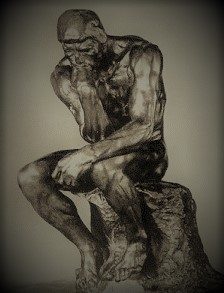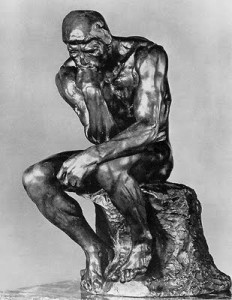As a psychiatrist you have to choose. You can see a lot of patients but, unfortunately, never get to know them in depth. Or you can work with a few patients to help them get to know more about themselves. If so, and equally unfortunately, you cannot help as many suffering people as you would like. Psychiatry needs both alternatives. Which method you choose depends on your attitude towards emotional problems, your temperament and interests. Certainly, it also depends on what kind of help the patient wants and what kind of problems s/he has.
I am interested in psychoanalysis, which I regard as a tool for understanding how our old experiences and feelings still can rule us. One cannot delete them – but one can get help to do something more constructive about them. Psychoanalysis is a way of becoming more ”agile” with oneself. This implies being able to deal with feelings and thoughts in an easier and less taxing way. There are other perspectives on psychic problems, and also other methods of dealing with them. If you are looking for help you must ask yourself: ”How do I look upon my problems? Does it sound interesting to become agile with my feelings? Do I think my life history has anything to do with how I am feeling right now? Do I want to probe into who I am – with the help of another person? Or is such a perspective nothing for me?”
Your answer must be personal, issuing from your temperament and interests. To provide a basis for your decision I will give you some examples. Psychological agility could imply:
- that you no longer constantly end up in the same kind of unhappy relationships
- that you do not to accuse yourself all the time for everything that occurs to you
- that you are less afraid of becoming abandoned or of criticizing injustice
- that you do not have that inexplicable worry at night time
- …
Perhaps you do not recognize this term “agility”. Rather, you suffer from feeling depressed, anxious, angry, restless. When I am talking about a decrease in agility, I refer to difficulties in dealing with these emotions when they pop up. Maybe it is even harder to grasp when, how, and why they emerge. The psychoanalyst offers a ”scene” where you can enact these experiences together with him/her.

The analyst tries to help you think of what you are feeling. As Rodin’s sculpture illustrates, s/he  aims to inspire you to reflect on yourself and your relationships with others. But psychoanalytic reflection is not a high-brow and intellectual “gymnastics”. Rather, an analytic treatment contains a lot of feelings that you often experience together with, and in relation to, your analyst. I’ve shaded the right-hand sculpture to illustrate the analyst’s background position; s/he will not load his/her personal issues onto you but try to enable you, the left-hand person, to imagine things abour your analyst. This is called transference, because you transfer onto the analyst ideas and feelings about people who are, or have been, important in your life.
aims to inspire you to reflect on yourself and your relationships with others. But psychoanalytic reflection is not a high-brow and intellectual “gymnastics”. Rather, an analytic treatment contains a lot of feelings that you often experience together with, and in relation to, your analyst. I’ve shaded the right-hand sculpture to illustrate the analyst’s background position; s/he will not load his/her personal issues onto you but try to enable you, the left-hand person, to imagine things abour your analyst. This is called transference, because you transfer onto the analyst ideas and feelings about people who are, or have been, important in your life.
Don’t let my Rodin arrangement give you the impression that the analyst is a guru who knows all the answers to your problems. S/he gets emotionally involved in what you’re communicating. Professionalism is shown through how s/he reflects on feelings that get stirred up inside him or her. This is called the analyst’s countertransference. The interplay between transference and countertransference is what gives a psychoanalytic hour and entire treatment its “juice”, vitality, and fascination for both parties.
Now you probably understand that to help you attain an agility or freedom in thinking and feeling, the analyst needs to have a personal analysis before treating you and other patients. S/he needs to experience “from inside” what this work implies. After my personal analysis I began training in the Swedish Psychoanalytic Association in 1981. You can visit its home page.
